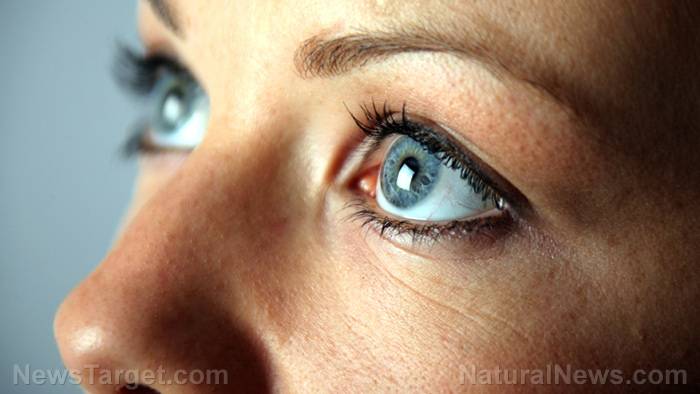New procedure reverses blindness by transplanting a stem cell patch onto the eye to boost light sensitive cells
05/02/2018 / By Jessica Dolores

We may someday help seniors currently suffering from macular degeneration regain their eyesight. That’s because scientists at the University College London (UCL) and the Moorefields Eye Hospital in London have just restored the eyesight of an 86-year-old man and a woman in her 60s through a patch of stem cells which treated the damaged area in their eyes.
In an operation that took two hours, the medical specialists inserted the patch under each patient’s retina. The patch was grown from human embryonic stem cells and placed on a thin plastic scaffold. Instead of replacing the damaged light-sensitive cells themselves, the sheet ’s single layer of retinal pigment epithelium, a specialized tissue which supports light cells, kept the cells healthy and promoted regeneration.
The two patients were observed for a year and showed remarkable improvement. From not being able to read at all before the operation, they ended up reading 80 words a minute using normal reading glasses.
Douglas Waters, the 86-year-old patient who suffered from severe wet age-related macular degeneration (AMD), and received the treatment in his right eye, is happy with the results of the operation. He can now return to his old habits of reading the newspaper and helping his wife with gardening chores. He no longer struggles with seeing things, even up close.
The results of the operation are groundbreaking since it was the first time an engineered piece of tissue was able to help people suffering from severe loss of eyesight to regain their vision.
Experts are optimistic about what the procedure can do. Professor Lydon da Cruz, consultant ophthalmologist at Moorfields Eye Hospital NHS Foundation Trust, observed that patients whose severe AMD robbed them of their vision can enjoy a better quality of life after the procedure gave their eyesight back to them.

Professor Pete Coffey from the UCL Institute of Ophthalmology hailed the study as a sign of “real progress in regenerative medicine.” He added that it opens the door on alternative treatment options for people with AMD. He hopes the study will be able to develop an affordable ‘off-the-shelf’ therapy for patients within the next five years.
Dr. Carmel Toomes, associate professor at Leeds Institute of Molecular Medicine, noted that the results offer many AMD patients, and those suffering from other retinal degenerative conditions, “real hope” that stem cell replacement therapy may someday be a reality.
Dr. Dusko Ilic, Reader in Stem Cell Science, King’s College London, added that although stem cell replacement therapy is still at its infancy stage, these results are encouraging.
AMD affects over 600,000 people in Britain. It occurs when light-sensitive cells at the center of the retina – the macula – is destroyed.
So far, the only treatments available are eye injections or laser surgery, which slow down the growth of blood vessels and harm the macula. Even so, these treatments can only restore vision partially. And they’re not for everyone.
The good news is the condition is preventable.
Eye care specialists agree that the single most important preventive measure is an annual eye check-up. This can detect the early signs of AMD. (Related: 3 simple ways to naturally support your vision and shock your eye doctor with the results.)
It’s also important to wear sunglasses that block ultraviolet rays which can damage the eyes.
A nutritious diet is also essential. Eye-friendly foods include:
- Dark green, yellow and orange vegetables with beta-carotene;
- Foods that contain vitamin E like nuts and oil-rich fish like tuna and salmon;
- Vitamin C foods like citrus fruit and black currants; and
- Zinc sources like lamb and whole cereals.
You can read more articles on how the medical industry is advancing at FutureScience.news.
Sources include:
Submit a correction >>
Tagged Under:
age-related macular degeneration, AMD, blindness, disease treatments, elderly health, embryonic stem cells, eye health, future tech, geriatric health, longevity, medical patch, ophthalmology, retina, stem cell therapy
This article may contain statements that reflect the opinion of the author





















